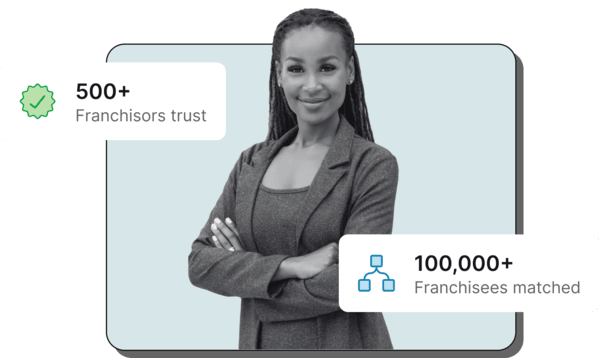Navigate quickly
How Much Do You Have to Spend?
Introduction
Whether you’re purchasing a whopper from Burger King or joining the Burger King franchise system, the old mantra holds true: there’s no such thing as a free lunch. When you first get started running a franchise you need to pay a fee to allow you to enter into that franchise. These fees are the largest fees that you will normally pay a franchisor and typically range between $5,000 and $1,000,000 depending on the franchise. The franchisor charges this fee as a way to recoup the costs of expanding the franchise and to continue to grow. From a franchisee perspective, this is a major outlay and can take a long time to make back, but is a necessary step. Aspiring business owners must understand how much capital is available to them so they can ascertain how much they can afford. The cash you have at your disposal is known as liquidity, and there are numerous ways to increase your liquidity above the balance in your bank account. As a result, many people don’t realize how much capital they actually can use for investments, like launching a franchise branch. We’ll run through some of those methods below.
Cash
Conventional wisdom suggests that consumers should maintain emergency cash reserves of 3-6 months of living expenses. This number is important because some people may save indiscriminately under the assumption that the more money they accrue in their bank account, the better. This is far from true. Due to inflation, the value of the cash in your account actually decreases over time relative to the costs of goods & services in the market. Stashing away cash without investing it is therefore a surefire way to reduce your wealth. Regardless of whether or not you choose to become a franchisee, it is crucial to find some way to earn a return on your savings. For our purposes, we are assuming that the method you are considering is franchising. Every person’s situation is different, but for most families, any cash saved over the 6 month cushion could be used for the initial franchise fees.
Unproductive Assets
Another way to generate some liquidity is to rid yourself of unproductive assets. This concept is typically applied to businesses, but is relevant for consumers, too. This category includes those items you hang onto despite the fact that they no longer generate value, whether that be financial or otherwise. For example, maybe you have a piano in your home that hasn’t had the ivories tickled since the kids moved out. Or, maybe you’ve got a Harley Davidson that you haven’t straddled in years collecting dust in the garage. These are items that may be nice to look at every once in awhile, but would be better served if you converted them to cash to start a new business. We encourage our clients to assess their personal lives to see if there are opportunities to convert unproductive assets into cash. You never know how much that old, inherited vase is worth, but it just may provide the foundation for your new Jimmy John’s. Grandma would be proud.
Home Equity Loans/HELOCs
Another way to generate liquidity is to leverage your home through a Home Equity Loan or Home Equity Line of Credit. These methods allow you to borrow money using the value of your home as collateral. WIth a Home Equity Loan, you repay the loan with equal monthly payments over a fixed term, just like your original mortgage. If you don’t repay the loan as agreed, your lender can foreclose on your home. The amount that you can borrow usually is limited to 85 percent of the equity in your home. The actual amount of the loan also depends on your income, credit history, and the market value of your home, so it’s important to maintain a quality credit score. Negotiate with more than one lender. Don’t be afraid to make lenders and brokers compete for your business by letting them know that you’re shopping for the best deal. Ask each lender to lower the points, fees, or interest rate. And ask each to meet — or beat — the terms of the other lenders. A home equity line of credit — also known as a HELOC — is a revolving line of credit, much like a credit card. You can borrow as much as you need, any time you need it, by writing a check or using a credit card connected to the account. You may not exceed your credit limit. Because a HELOC is a line of credit, you make payments only on the amount you actually borrow, not the full amount available. HELOCs also may give you certain tax advantages unavailable with some kinds of loans. We encourage our clients to talk to an accountant or tax adviser for additional details.
Borrowing Against your 401k
Another option that enables you to get cash quickly is to borrow against the value of your 401k. Technically, 401(k) loans are not true loans because they do not involve either a lender or an evaluation of your credit. They are more accurately described as the ability to access a portion (usually the lesser of 50% or $50,000) of your own retirement plan money on a tax-free basis. You then must repay the money you have accessed under rules designed to restore your 401(k) plan to approximately its original state, as if the transaction had not occurred.
Another confusing concept in these transactions is the term “interest”. Any interest charged on the outstanding loan balance is repaid by the participant into the participant's own 401(k) account, so technically this also is a transfer from one pocket to another, not a borrowing cost or loss. As such, the cost of a 401(k) loan on your retirement savings progress can be minimal, neutral or even positive – but in most cases it will be less than the cost of paying "real interest" on a bank or consumer loan. Investopedia lists four primary factors that make borrowing against your 401k a reasonable choice.
1) Speed and Convenience – In most 401(k) plans, requesting a loan is quick and easy, requiring no lengthy applications or credit checks. Normally, it does not generate an inquiry against your credit or affect your credit rating. Many 401(k)s allow loan requests to be made with a few clicks on a website, and you can have a check in your hand in a few days, with total privacy. One innovation now being adopted by some plans is a debit card through which multiple loans can be made instantly in small amounts.
2) Repayment Flexibility – Although regulations specify a five-year amortizing repayment schedule, for most 401(k) loans, you can repay the plan loan faster with no prepayment penalty. Most plans allow loan repayment to be made conveniently through payroll deductions (using after-tax dollars). Your plan statements show credits to your loan account and your remaining principal balance, just like a regular bank loan statement.
3) Economy – There is no cost (other than perhaps a modest loan origination or administration fee) to tap your own 401(k) money for short-term liquidity needs. Here's how it usually works: You specify the investment account(s) from which you want to borrow money. Those investments are liquidated for the duration of the loan. Therefore, you lose any positive earnings that would have been produced by those investments for a short period of time. The upside is that you also avoid any investment losses on this money.
4) Your Retirement Can Benefit – As you make loan repayments to your 401(k) account, they usually are allocated back into the investments you have chosen. You will repay to the account a bit more than you borrowed from it, and the difference is called interest. The loan produces no (that is to say, neutral) impact on your retirement if any lost investment earnings match the "interest" paid in – i.e., earnings opportunities are offset dollar-for-dollar by interest payments. If the interest paid in exceeds any lost investment earnings, taking a 401(k) loan actually can increase your retirement progress.
Conclusion
While every individual’s situation is different, there are often numerous options available to increase short-term liquidity for an investment like starting a franchise. We encourage our clients to consider these possibilities in the context of their own finances to decide which method may be right for them.
Ultimate franchising guide
All you need to know as a first time franchisee: Step by step guidance from experienced franchise professionals.















